Franconia Notch State Park
- December 28, 2023
- 0 comment
Nestled in the majestic White Mountains of northern New Hampshire, Franconia Notch State Park stands as a captivating natural haven. Spanning across the towns of Lincoln and Franconia in Grafton County, this 6,692.8-acre state park has been a cherished destination since its establishment in 1928. Blessed with a unique location at an elevation of 2,067 feet, the park showcases the stunning beauty of Franconia Notch, a mountain pass flanked by the Kinsman and Franconia Ranges.
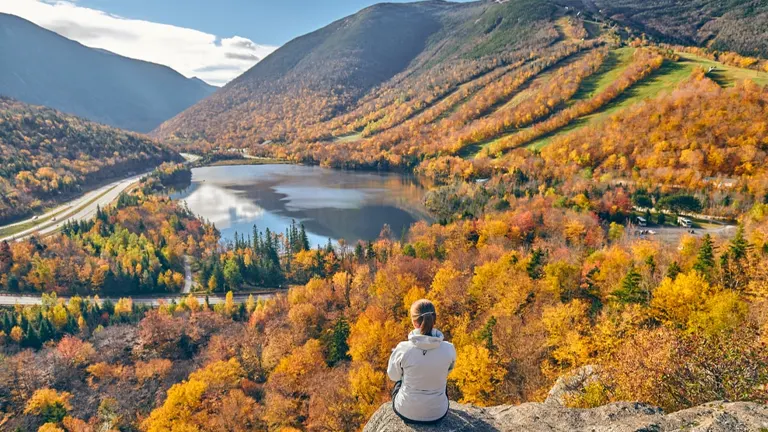
Administered by the New Hampshire Division of Parks and Recreation, Franconia Notch State Park is celebrated for its diverse landscapes, including iconic features like Cannon Mountain, Flume Gorge, and Lonesome Lake. Whether exploring its well-maintained trails, witnessing the remnants of the Old Man of the Mountain, or simply soaking in the natural splendor, the park offers a timeless retreat for both adventure seekers and those seeking tranquility amid the scenic wonders of New Hampshire’s wilderness.
Characterizing Features of the Franconia Notch State Park
- Cannon Mountain: Dominating the skyline, Cannon Mountain serves as a central feature of Franconia Notch State Park. Named for a distinctive cannon-shaped rock formation at its summit, Cannon Mountain is renowned for its challenging ski slopes and an iconic aerial tram that offers year-round access. The mountain provides not only thrilling recreational opportunities but also stunning panoramic views of the surrounding White Mountains.
- Flume Gorge: The Flume Gorge stands out as one of the park’s natural wonders, a captivating chasm with towering granite walls. Visitors can explore the well-maintained boardwalk that winds through the gorge, providing an up-close experience of its rugged beauty. The Flume Gorge showcases the geological forces that shaped Franconia Notch, leaving behind a dramatic landscape for all to appreciate.
- Old Man of the Mountain Historical Site: While the iconic Old Man of the Mountain may have succumbed to nature’s forces in 2003, its historical significance is preserved at this site within the park. Once a symbol of New Hampshire, the “Great Stone Face” is immortalized by Nathaniel Hawthorne and Daniel Webster. Interpretive displays offer a glimpse into the cultural and geological legacy of this famous rock formation.
- Lonesome Lake: Nestled on the west side of Franconia Notch, Lonesome Lake is a serene destination accessible via the Lonesome Lake Trail. Surrounded by lush forests and offering stunning reflections of the surrounding peaks, the lake provides a perfect spot for a day hike. The nearby Lonesome Lake Hut, maintained by the Appalachian Mountain Club, offers hikers a comfortable place to rest and enjoy the scenery.
- Eagle Cliffs and Greenleaf Trail: On the east side of the notch, the Eagle Cliffs, named for the eagles that sometimes roost there, present a scenic backdrop. The Greenleaf Trail winds around the cliffs, leading to Greenleaf Hut, another stop on the Appalachian Mountain Club’s network of huts. This area offers a quieter, less-traveled experience, allowing hikers to immerse themselves in the natural beauty of Franconia Notch.
- Franconia Ridge Trail and Mount Lafayette: The Franconia Ridge Trail, part of the Appalachian Trail, offers a challenging yet rewarding trek to the summit of Mount Lafayette. Standing at 5,249 feet, Mount Lafayette provides expansive views of the surrounding peaks and valleys. Hikers can embark on a memorable journey along this trail, connecting with the larger Appalachian Trail system that extends through the White Mountains.
- The Basin: A natural marvel along the Pemigewasset River, “the Basin” is a granite pothole formed by the erosive forces of the retreating North American ice sheet. Measuring about 20 feet across, this unique geological formation showcases the power of water over millennia. Visitors can marvel at the smooth, sculpted basin and the adjacent “Old Man’s Foot,” appreciating the ongoing forces of erosion in the park.
- Recreational Opportunities: Franconia Notch State Park is not just a feast for the eyes but also a playground for outdoor activities. With miles of hiking, biking, and ski trails, the park caters to adventurers of all levels. From casual strolls along the Recreational Trail to challenging hikes on the Appalachian Trail, the park invites visitors to engage with its diverse landscapes and recreational offerings.
- White Mountain National Forest Setting: Situated in the heart of the White Mountain National Forest, Franconia Notch State Park benefits from its proximity to a vast wilderness. The parkway that winds through the notch provides a unique and scenic route for travelers, emphasizing the importance of preserving the natural beauty and ecological diversity of this protected area.
- Historical and Cultural Significance: Beyond its natural splendors, Franconia Notch holds historical and cultural significance as the former home of the Old Man of the Mountain. The area has inspired writers and dignitaries, and the Flume Gorge Visitor Center and the New England Ski Museum provide further insights into the region’s rich history and contributions to alpine skiing in the United States. Visitors are encouraged to explore this multifaceted destination, appreciating both its natural and cultural heritage.
History
Established in 1928, Franconia Notch State Park has a rich history woven into the fabric of New Hampshire’s White Mountains. Originally designated as a state park to protect and showcase the natural beauty of Franconia Notch, the park has since become a haven for outdoor enthusiasts. The park’s development gained momentum in the 1930s with the inception of Cannon Mountain, a state-owned ski resort, offering both winter and summer activities. Cannon Mountain’s iconic aerial tramway, introduced in subsequent years, became a symbol of the park’s commitment to providing unique recreational experiences.

Franconia Notch was also home to the famous Old Man of the Mountain, a distinctive rock formation that drew admirers and inspired writers, including Nathaniel Hawthorne and Daniel Webster. Despite the tragic collapse of the Old Man in 2003, the park continues to captivate visitors with its geological wonders, such as the Flume Gorge and the Basin. Over the years, Franconia Notch State Park has evolved into a multifaceted destination, blending natural preservation with recreational opportunities, creating a timeless space for both solace and adventure in the heart of the White Mountains.
Importance in Conservation and Recreation of Franconia Notch State Park
Franconia Notch State Park stands as a testament to the dual importance of conservation and recreation within the heart of the White Mountains in New Hampshire. Established in 1928, the park plays a pivotal role in preserving the natural beauty of Franconia Notch, safeguarding a diverse ecosystem that includes granite peaks, waterfalls, and pristine lakes. The park’s commitment to conservation extends to its inclusion within the expansive White Mountain National Forest, emphasizing the broader significance of preserving the region’s ecological integrity.
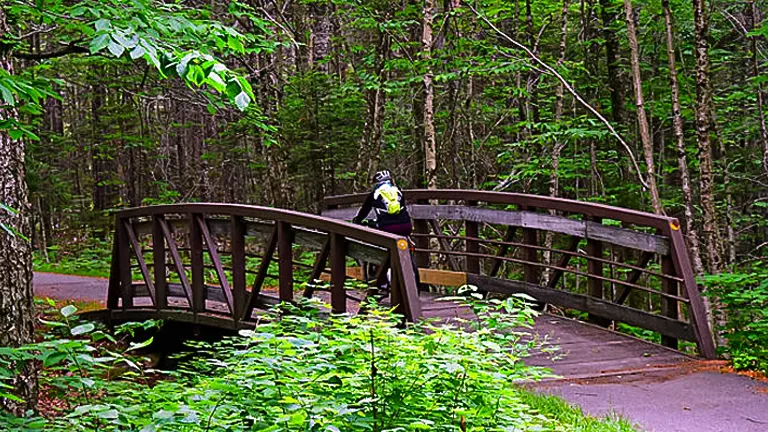
Beyond its ecological importance, Franconia Notch State Park serves as a haven for outdoor recreation. Its extensive network of trails, ranging from casual strolls to challenging hikes, beckons hikers, bikers, and skiers alike. Cannon Mountain, with its historic ski resort and iconic tramway, provides a unique blend of winter and summer activities. The park’s recreational offerings not only foster a connection between visitors and the natural world but also contribute to the region’s tourism and local economy. As a harmonious blend of conservation and recreation, Franconia Notch State Park remains a model for balancing the preservation of natural wonders with the promotion of outdoor enjoyment for generations to come.
Unique Location of Franconia Notch State Park

Situated within the picturesque White Mountains of northern New Hampshire, Franconia Notch State Park boasts a remarkable and distinctive location. Spanning Lincoln and Franconia in Grafton County, this 6,692.8-acre haven holds a unique geographical position at an elevation of 2,067 feet. Established in 1928 and now administered by the New Hampshire Division of Parks and Recreation, the park unfolds along an eight-mile stretch of Interstate 93, traversing the scenic Franconia Notch a mountain pass framed by the majestic Kinsman and Franconia Ranges. This strategic setting not only allows for breathtaking views of natural wonders like Cannon Mountain, Flume Gorge, and Lonesome Lake but also serves as a gateway to the expansive White Mountain National Forest. Franconia Notch State Park’s exceptional location, characterized by its accessibility and juxtaposition of rugged peaks and serene valleys, beckons visitors to immerse themselves in the unique charm and natural splendor of this captivating New Hampshire destination.
Diverse Vegetation and Unique Plant Species:
- Mountain Avens (Dryas octopetala): This alpine flower graces the rocky slopes of Franconia Notch with its distinctive eight-petaled white blooms. Mountain avens, with their low-growing habit, are adapted to the harsh conditions of higher elevations, including the thin soils and short growing seasons.
- Diapensia (Diapensia lapponica): Another alpine gem, diapensia, blankets the rocky terrain with cushion-like patches of tiny pink flowers. This low-growing evergreen plant has adapted to survive in nutrient-poor soils, and its presence adds to the floral tapestry of Franconia Notch’s alpine zones.
- Balsam Fir (Abies balsamea): Found in the boreal forest elements of the park, the balsam fir is a coniferous tree with aromatic needles. Its dense foliage provides cover for wildlife, and it contributes to the unique character of the forested areas within Franconia Notch.
- Red Spruce (Picea rubens): Another representative of the boreal forest, the red spruce adds verticality to the park’s vegetation. With its conical shape and reddish-brown bark, the red spruce is well-adapted to the cooler temperatures and higher elevations found in Franconia Notch.
- Sugar Maple (Acer saccharum): Among the dominant species in the northern hardwood forests, the sugar maple is a deciduous tree celebrated for its vibrant autumn foliage. The park’s lower elevations showcase these maples, creating a spectacular display of red, orange, and yellow hues in the fall.
- Yellow Birch (Betula alleghaniensis): Coexisting with sugar maples, the yellow birch is another key component of the northern hardwood forests. Recognized by its distinctive yellow bark that peels away in thin, curly strips, the yellow birch contributes to the visual diversity of Franconia Notch’s wooded landscapes.
- Maidenhair Fern (Adiantum pedatum): Adorning damp and shaded areas, the delicate maidenhair fern is a distinctive fern species found along the park’s trails. Its fan-shaped fronds add a touch of elegance to the undergrowth, creating a serene and visually appealing environment.
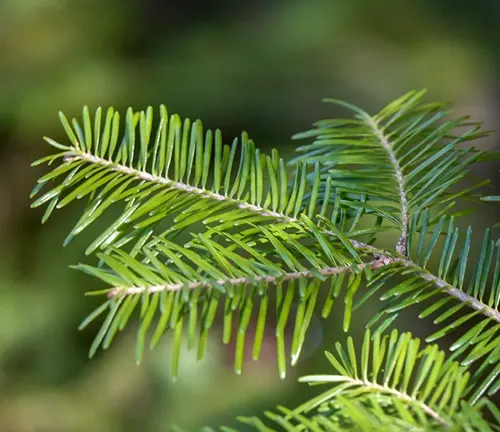
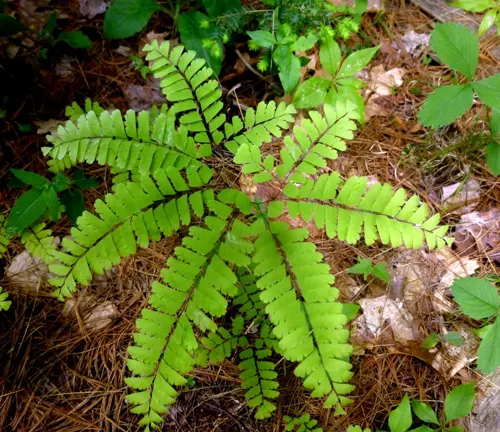
Different Species of Mushrooms in Franconia Notch State Park
- Fly Agaric (Amanita muscaria): The iconic fly agaric, with its bright red cap adorned with white spots, can be found in the woodlands of Franconia Notch. While visually striking, it is important to note that this mushroom is toxic and should not be consumed. Its presence adds a touch of color to the forest floor but serves as a reminder of the importance of caution in mushroom identification.
- Chanterelles (Cantharellus): Franconia Notch is home to various species of chanterelle mushrooms, including the golden chanterelle (Cantharellus cibarius). These edible mushrooms are prized by foragers for their delicate flavor and are often found in the park’s mixed hardwood and coniferous forests.
- Lion’s Mane (Hericium erinaceus): Nestled in the nooks of hardwood trees, the lion’s mane mushroom is a distinctive and toothed fungus resembling cascading white icicles. Beyond its unique appearance, this mushroom is sought after for its culinary appeal and potential health benefits.
- Hen of the Woods (Grifola frondosa): Often found at the base of oak trees, the hen of the woods mushroom, also known as maitake, forms large, overlapping clusters of fan-shaped caps. Culinary enthusiasts appreciate its rich and savory flavor, making it a sought-after find for those exploring the park’s woodlands.
- Reishi (Ganoderma): Franconia Notch hosts various species of reishi mushrooms, recognized for their distinctive kidney-shaped caps and glossy appearance. Reishi mushrooms have been used in traditional medicine for their purported health benefits, adding both ecological and cultural significance to their presence in the park.
- Amanita Species: In addition to the fly agaric, Franconia Notch is home to various other Amanita species, each with its own unique features. Some, like the Amanita muscari, can be found in the coniferous sections of the park, adding to the diversity of mushroom species throughout the landscape.
- Boletes (Boletus): The park’s diverse habitats support a variety of bolete mushrooms, including the edible and sought-after porcini (Boletus edulis). These mushrooms often form mycorrhizal relationships with the surrounding trees, contributing to the park’s overall ecosystem health.
- Russula Mushrooms: Franconia Notch is habitat to numerous Russula species, characterized by their colorful caps and often brittle texture. Some Russula species are edible, while others are not, emphasizing the importance of careful identification before consumption.
- Coral Mushrooms (Ramaria): Adding a unique and coral-like appearance to the forest floor, coral mushrooms thrive in the park’s woodlands. While they come in various colors and shapes, these mushrooms are known for their intricate branching structures and add to the park’s fungal biodiversity.
- Sulfur Shelf (Laetiporus sulphureus): Often found on deciduous trees, the sulfur shelf mushroom, also known as chicken-of-the-woods, features bright yellow-orange brackets. Edible when young, this mushroom is known for its meaty texture and is a distinctive and sought-after find for those exploring Franconia Notch State Park.
Fauna:
- White-Tailed Deer (Odocoileus virginianus): The white-tailed deer, a common and iconic species in Franconia Notch State Park, thrives in the diverse habitats ranging from forested areas to open meadows. Visitors may encounter these graceful creatures throughout the park, especially during dawn and dusk.
- Eastern Coyote (Canis latrans): The eastern coyote, adaptable to a variety of environments, is found in Franconia Notch. This carnivorous species plays a crucial role in the park’s ecosystem by helping control small mammal populations and contributing to overall ecological balance.
- Black Bear (Ursus americanus): Franconia Notch provides suitable habitat for black bears, and sightings of these powerful mammals are possible, particularly in more secluded areas. The park encourages responsible practices to minimize human-bear interactions and ensure the safety of both visitors and wildlife.
- Red Fox (Vulpes vulpes): The red fox, with its striking russet fur, is a resident of Franconia Notch State Park. This adaptable predator is often spotted in various habitats, including meadows and wooded areas, as it searches for small mammals and birds.
- Moose (Alces alces): Franconia Notch is part of the larger White Mountains region, known for its moose population. Although moose sightings are not guaranteed, the park’s diverse landscapes, including wetland areas, provide suitable habitat for these massive herbivores.
- Snowshoe Hare (Lepus americanus): The snowshoe hare, adapted to northern climates, can be found in the park’s forests. Its seasonal coat changes from brown in summer to white in winter, offering camouflage against the snow and showcasing the species’ remarkable adaptability.
- Eastern Chipmunk (Tamias striatus): Franconia Notch is home to the eastern chipmunk, a small and agile ground-dwelling rodent. Visitors may catch glimpses of these energetic creatures as they forage for seeds and nuts in the park’s woodlands.
- Eastern Gray Squirrel (Sciurus carolinensis): The eastern gray squirrel, a common sight in wooded areas, is present in Franconia Notch. These acrobatic and adaptable squirrels play a role in the park’s ecosystem by dispersing seeds and contributing to forest regeneration.
- Northern Flicker (Colaptes auratus): Among the diverse bird species, the northern flicker, a type of woodpecker, can be spotted in Franconia Notch. With its distinctive markings and ground-feeding habits, this bird adds to the avian diversity within the park.
- American Bald Eagle (Haliaeetus leucocephalus): The park’s aquatic habitats, including Echo Lake and Profile Lake, provide suitable environments for bird species such as the American bald eagle. These majestic raptors may be observed soaring over the water, showcasing the park’s significance as a habitat for diverse birdlife.

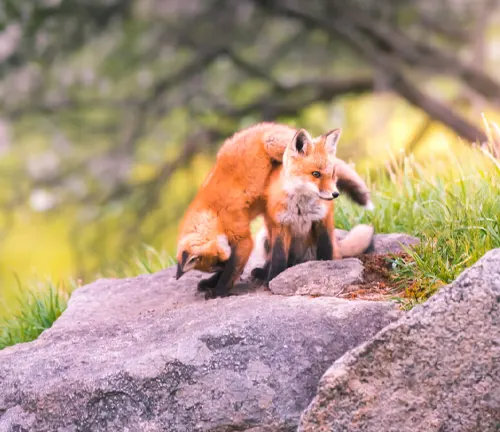
Importance as a Wildlife Corridor and Habitat for Threatened Species
Franconia Notch State Park plays a pivotal role as a vital wildlife corridor and essential habitat for several threatened species, contributing significantly to regional biodiversity and conservation efforts. The park’s diverse ecosystems, ranging from dense forests and open meadows to wetlands and water bodies, provide an interconnected landscape that facilitates the movement of wildlife throughout the White Mountains region. This connectivity is crucial for species like the eastern coyote, moose, and black bear, allowing them to traverse the park and maintain genetic diversity within their populations.
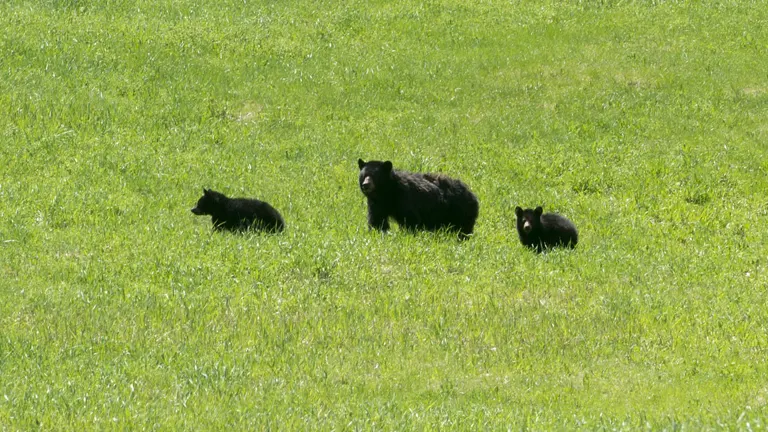
Additionally, Franconia Notch serves as a refuge for threatened and sensitive species, including the elusive Canada lynx and the federally threatened northern long-eared bat. The park’s commitment to conservation practices, coupled with its designation as a wildlife corridor, underscores its significance in sustaining healthy ecosystems and safeguarding the habitats necessary for the survival of diverse and often vulnerable species. As a result, Franconia Notch State Park stands as a cornerstone in fostering coexistence between human visitors and the intricate web of wildlife that relies on its protected and interconnected landscapes.
Activities in Franconia Notch State Park for Visitors
1. Hiking
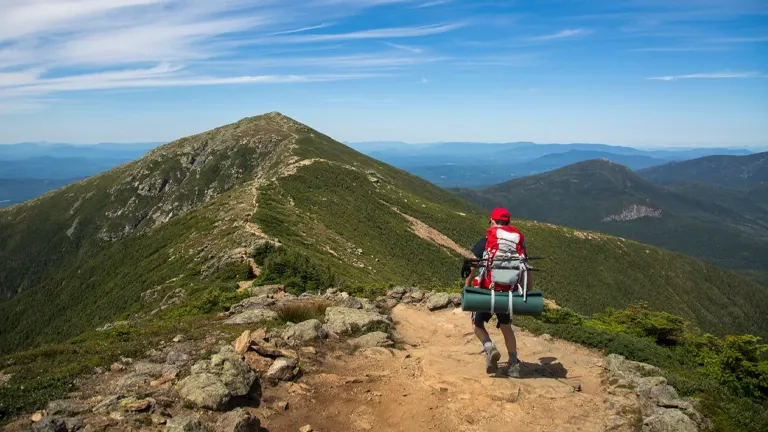
Franconia Notch State Park offers an extensive network of hiking trails suitable for various skill levels, providing visitors with opportunities to explore the park’s diverse landscapes. From the family-friendly Franconia Notch Recreation Path to the challenging Franconia Ridge Trail, hikers can choose from an array of routes to experience the park’s natural beauty, including waterfalls, mountain vistas, and lush forests.
2. Skiing and Snowboarding

In the winter months, Franconia Notch transforms into a snowy wonderland, making it a prime destination for skiing and snowboarding enthusiasts. Cannon Mountain, the park’s iconic ski resort, provides thrilling slopes for winter sports enthusiasts of all levels. The aerial tramway offers panoramic views during the ascent, adding to the overall winter adventure experience.
3. Cannon Mountain Aerial Tramway
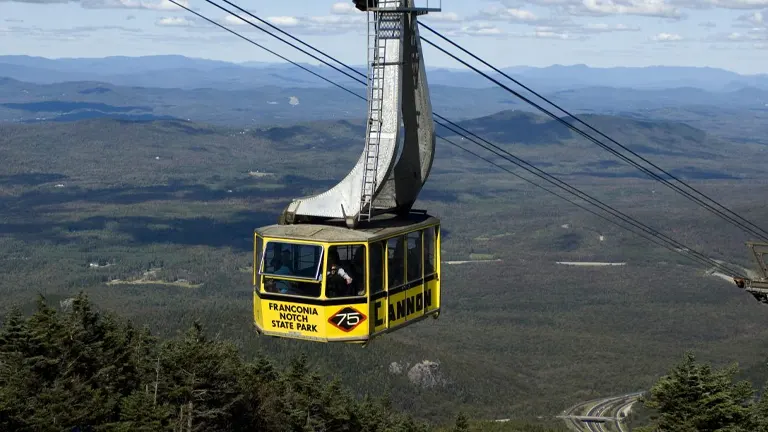
The Cannon Mountain Aerial Tramway is a year-round attraction that offers visitors breathtaking views of Franconia Notch and the surrounding White Mountains. Whether ascending in the warmer months to enjoy hiking at higher elevations or taking in the winter landscapes during a skiing adventure, the tramway provides a unique and scenic experience.
4. Fishing

Franconia Notch State Park provides fishing enthusiasts with opportunities to cast their lines in Echo Lake and Profile Lake. These pristine mountain lakes offer a serene setting for fishing, and visitors can try their luck at catching trout or other freshwater species. The park encourages responsible angling practices to preserve the delicate aquatic ecosystem.
5. Flume Gorge Exploration
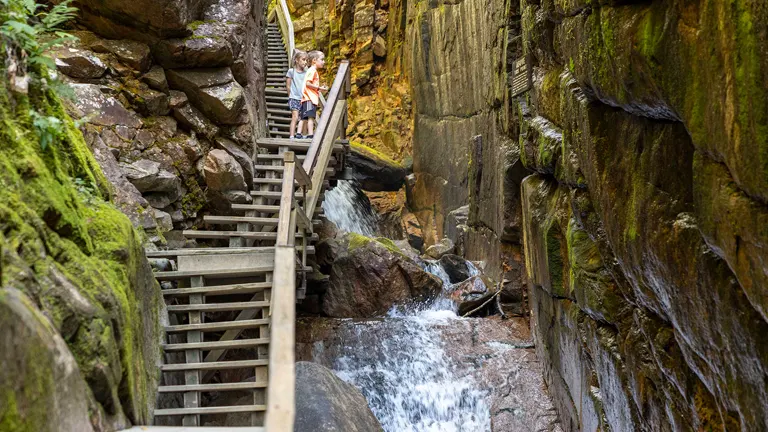
The Flume Gorge, a natural granite gorge extending 800 feet at the base of Mount Liberty, is a highlight for visitors seeking a captivating geological experience. Accessible via a well-maintained boardwalk, the Flume Gorge allows visitors to stroll through towering granite walls, marvel at cascading waterfalls, and appreciate the park’s geological wonders.
6. Camping
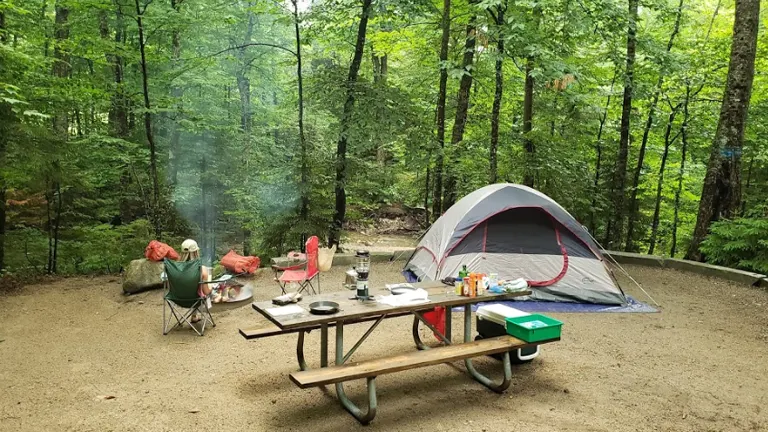
For those seeking a more immersive experience, Franconia Notch State Park offers camping opportunities at Lafayette Place Campground. Nestled within the park’s scenic surroundings, the campground provides a convenient base for exploring nearby trails, enjoying starry nights, and experiencing the tranquility of the White Mountains.
7. Wildlife Watching

Franconia Notch is home to a diverse array of wildlife, and visitors can engage in wildlife watching throughout the park. From birdwatching near the lakeshores to observing mammals like deer and foxes in their natural habitats, the park provides a rich tapestry of opportunities for nature enthusiasts to connect with the local fauna.
8. Interpretive Programs
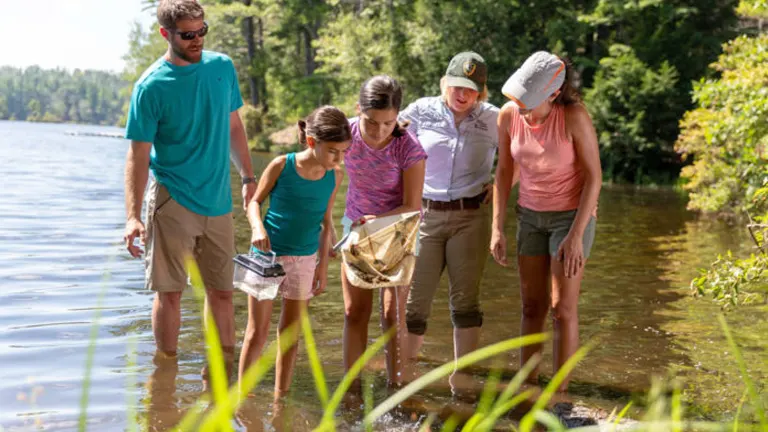
The park’s interpretive programs offer educational experiences for visitors of all ages. Led by knowledgeable park staff, these programs provide insights into the geological, ecological, and historical aspects of Franconia Notch. Guided walks, talks, and interactive demonstrations enhance the visitor experience, fostering a deeper appreciation for the park’s natural and cultural heritage.
Conservation and Management
- Habitat Preservation: Franconia Notch State Park prioritizes habitat preservation to maintain the ecological integrity of its diverse landscapes. Efforts are directed towards safeguarding critical habitats for plant and animal species, ensuring that the park continues to serve as a refuge for both common and threatened species. By implementing conservation strategies, the park aims to protect the biodiversity that contributes to the overall health of the White Mountains ecosystem.
- Trail Management and Sustainability: The park places a strong emphasis on sustainable trail management to balance recreational use with the preservation of natural habitats. Trail systems are carefully designed and maintained to minimize environmental impact, prevent soil erosion, and protect sensitive plant life. Signage and educational materials are employed to guide visitors on responsible trail use, fostering a sense of environmental stewardship among park-goers.
- Wildlife Corridor Protection: Recognizing the importance of Franconia Notch as a wildlife corridor, the park is committed to protecting and enhancing connectivity between habitats. Conservation measures focus on minimizing barriers to wildlife movement, such as road crossings and human infrastructure, to promote genetic diversity and healthy population dynamics among resident species like black bears, eastern coyotes, and moose.
- Invasive Species Management: Franconia Notch State Park actively addresses the threat of invasive plant species that can disrupt native ecosystems. Conservation efforts involve monitoring and managing invasive species to prevent their proliferation, preserving the park’s unique plant communities and ensuring that native flora can thrive without competition from aggressive non-native species.
- Water Quality Protection: Preservation of water quality in lakes and streams is a priority for Franconia Notch. The park implements measures to minimize runoff and pollution, protecting aquatic habitats and the health of resident fish species. Education initiatives inform visitors about the importance of responsible fishing practices and water conservation to maintain the park’s pristine aquatic environments.
- Climate Resilience Planning: Franconia Notch State Park acknowledges the impacts of climate change and engages in resilience planning to address potential challenges. This includes monitoring changes in weather patterns, preparing for extreme weather events, and adapting management practices to mitigate the effects of climate-related shifts on the park’s ecosystems.
- Collaboration with Conservation Organizations: To enhance its conservation efforts, the park collaborates with local and regional conservation organizations. These partnerships contribute additional resources, expertise, and support for initiatives such as habitat restoration projects, wildlife research, and educational programs. By fostering collaboration, Franconia Notch strengthens its role in broader conservation networks.
- Visitor Education and Outreach: Franconia Notch State Park places a strong emphasis on educating visitors about the principles of conservation and responsible outdoor recreation. Interpretive programs, informational signage, and outreach initiatives aim to raise awareness about the park’s ecological significance, fostering a sense of environmental stewardship among the park’s diverse visitors.
Recommendation
I strongly suggest exploring Franconia Notch State Park for a fantastic combination of nature and culture. This park is renowned for its varied ecosystems, captivating landmarks, and enjoyable activities. Engage in outdoor pursuits such as hiking and wildlife observation, contributing to the park’s safety and preservation. The enchanting trails, intriguing historical sites, and collaborative efforts on conservation initiatives make Franconia Notch State Park a must-visit destination for those seeking a delightful mix of nature and exciting adventures.
Conclusion
In conclusion, Franconia Notch State Park stands as a testament to the breathtaking beauty and ecological richness that the White Mountains of northern New Hampshire have to offer. From the iconic peaks of Cannon Mountain to the serene shores of Echo Lake, the park captivates visitors with its diverse landscapes and abundant wildlife. Whether embarking on a challenging hike along the Franconia Ridge Trail, exploring the geological wonders of the Flume Gorge, or simply taking in the tranquility of Lonesome Lake, Franconia Notch provides a sanctuary for both adventure seekers and those seeking solace in nature. The park’s commitment to conservation, habitat protection, and responsible recreation ensures that future generations can continue to marvel at the wonders that make Franconia Notch a cherished and enduring gem in the heart of the White Mountains.
FAQs
- What makes Franconia Notch State Park unique among other parks in New Hampshire?
Franconia Notch stands out for its stunning location within the White Mountains, offering a blend of diverse ecosystems, iconic landmarks like Cannon Mountain, and a rich cultural and geological history. The park’s unique position as a mountain pass enhances its appeal, making it a distinct destination for nature enthusiasts. - Are there any guided tours available in Franconia Notch State Park?
While the park doesn’t offer guided tours directly, there are interpretive programs and informational materials available. Visitors can explore the park’s trails and attractions at their own pace while benefiting from informative signage and occasional ranger-led programs that enhance the overall experience. - Can I fish in Franconia Notch State Park, and what kind of fish can I expect to catch?
Yes, fishing is permitted in Echo Lake and Profile Lake. Anglers can expect to catch various species of trout, contributing to a rewarding fishing experience. It’s important to adhere to fishing regulations and practice responsible angling to preserve the park’s aquatic ecosystem. - What is the best time to visit Franconia Notch State Park for fall foliage?
The best time to witness the vibrant fall foliage in Franconia Notch is typically in late September to early October. During this period, the park’s hardwood forests transform into a breathtaking tapestry of red, orange, and yellow hues, providing a picturesque backdrop for visitors. - Can I camp within Franconia Notch State Park, and are reservations required?
Camping is available at Lafayette Place Campground within the park. While reservations are recommended, some sites are available on a first-come, first-served basis. Camping offers a unique opportunity to immerse oneself in the natural surroundings and enjoy starry nights in the heart of the White Mountains. - Are pets allowed in Franconia Notch State Park?
Yes, pets are allowed in designated areas of the park, but they must be kept on a leash at all times. It’s important for pet owners to be mindful of park regulations to ensure a harmonious coexistence with other visitors and protection of the park’s wildlife. - What measures does Franconia Notch State Park take for wildlife conservation?
Franconia Notch is actively involved in wildlife conservation through habitat protection, ecosystem monitoring, and collaborative research initiatives. The park works to minimize human-wildlife conflicts, preserve critical habitats, and contribute to the overall health and sustainability of the region’s diverse fauna. - Are there winter activities available in Franconia Notch State Park?
Absolutely! Winter enthusiasts can enjoy skiing and snowboarding at Cannon Mountain, explore snow-covered trails, and take in the scenic landscapes via the Cannon Mountain Aerial Tramway. Franconia Notch transforms into a winter wonderland, providing opportunities for both thrilling adventures and serene winter experiences.
That’s all for now on Franconia Notch State Park. We hope that this brief overview has inspired you to visit this beautiful destination and experience all that it has to offer. From stunning natural scenery to exciting outdoor activities, this park truly has something for everyone. So, what are you waiting for? Plan your trip today and discover the magic of Franconia Notch State Park for yourself!



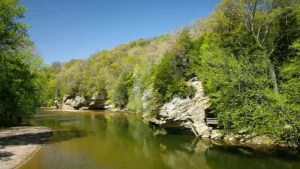


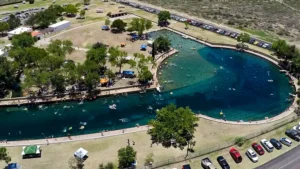
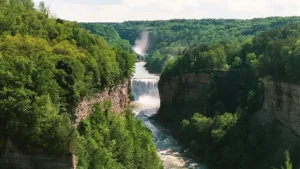
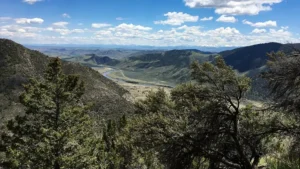
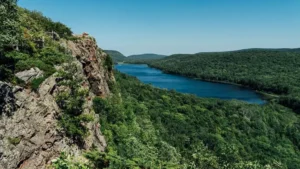
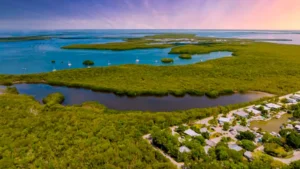
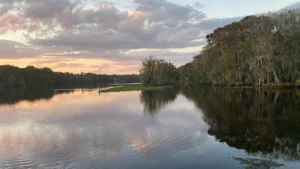
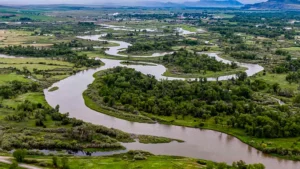
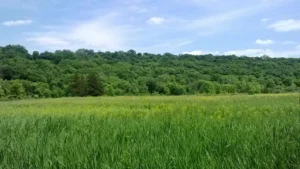
Leave your comment